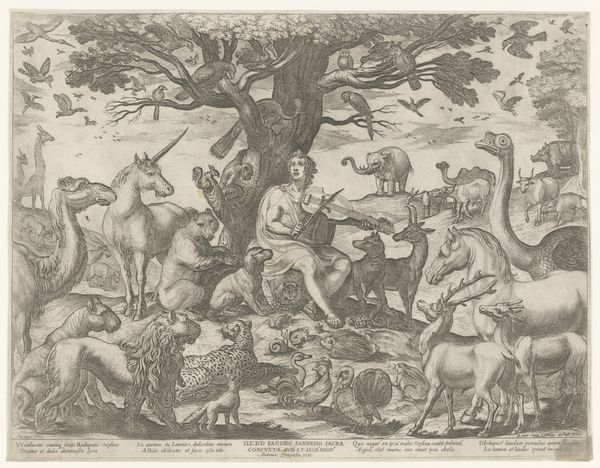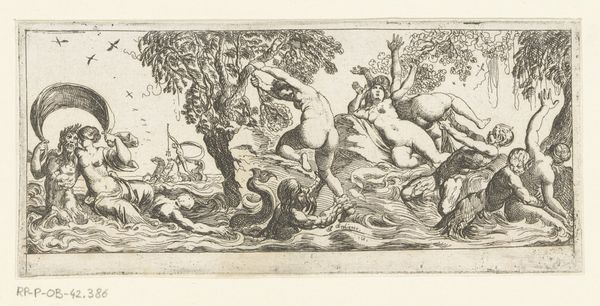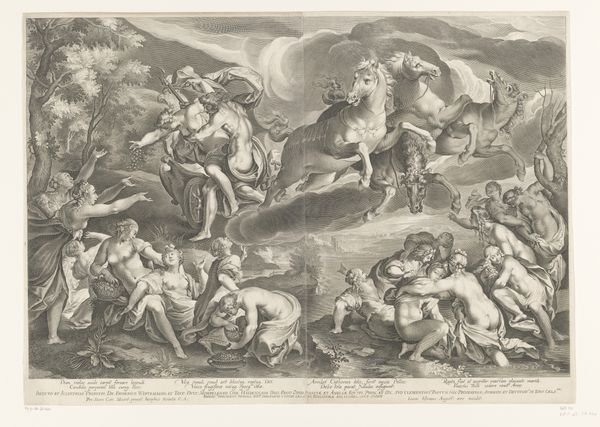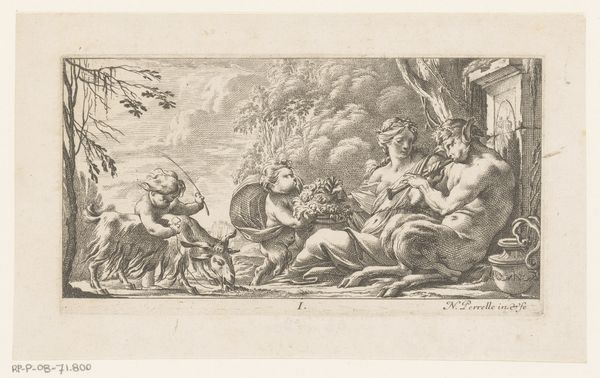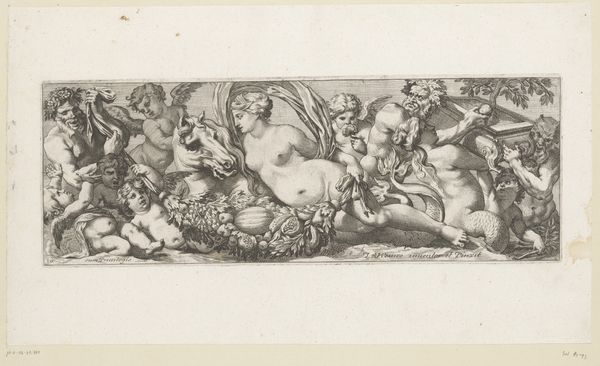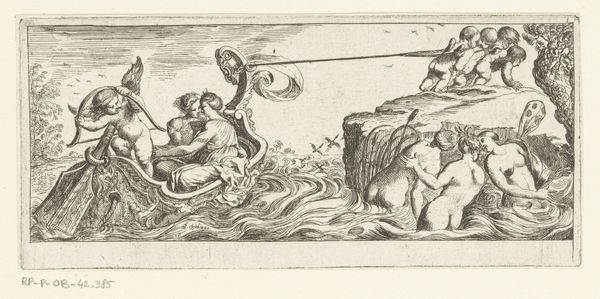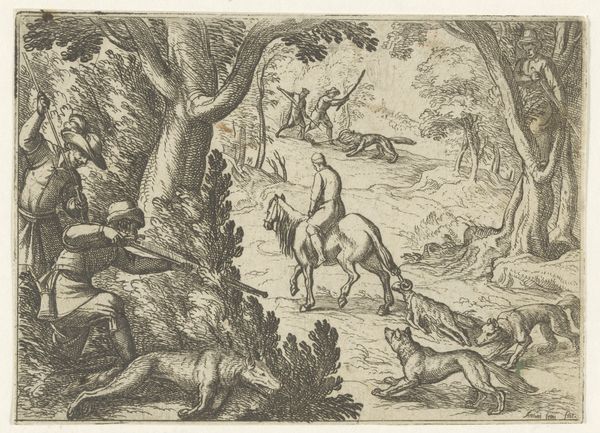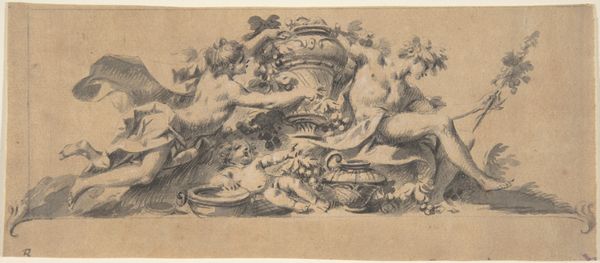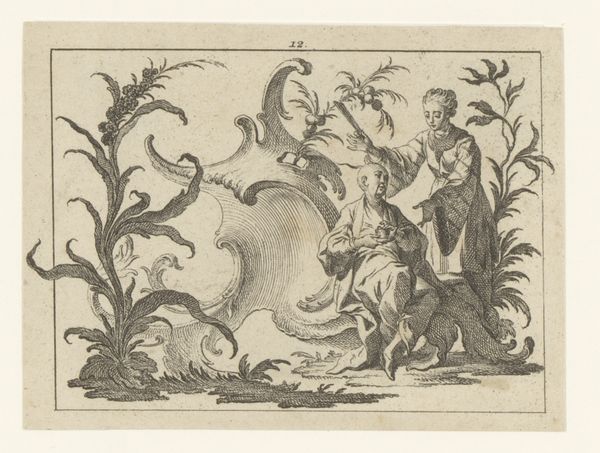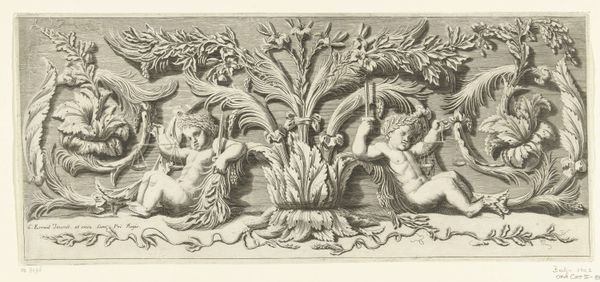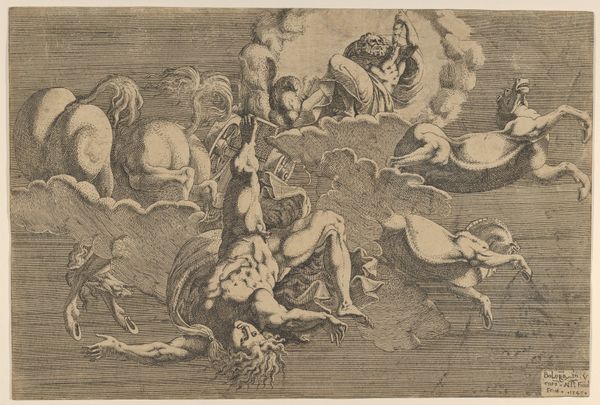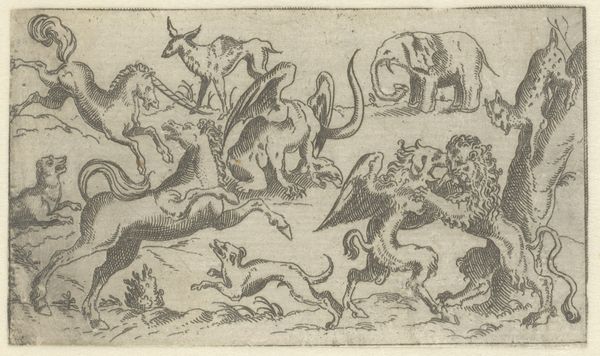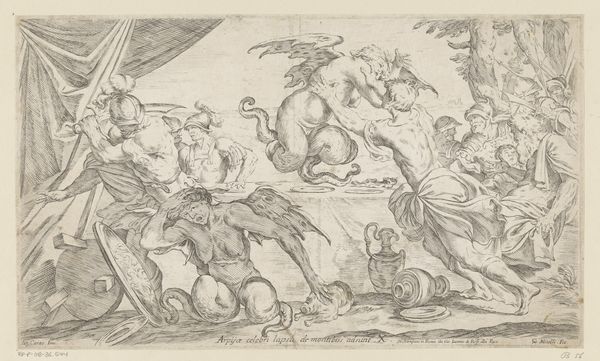
print, engraving
#
allegory
#
baroque
# print
#
figuration
#
line
#
history-painting
#
engraving
Dimensions: height 225 mm, width 431 mm
Copyright: Rijks Museum: Open Domain
Curator: Jacques Belly’s engraving, "Cephalus door Aurora meegenomen in haar strijdwagen," created in 1641, is now on display. I’m struck immediately by the energetic dynamism captured in monochrome. What are your initial impressions? Editor: The raw, almost frenetic energy jumps out. It’s busy. You can almost feel the grind of the metal burin creating all those lines—a real sense of forceful labor there. Curator: Indeed. Belly masterfully uses line and tone to articulate form and movement. Consider how he employs contrasting areas of dense hatching versus sparse lines to suggest depth and volume. It draws us in to read it almost like language. Editor: It makes you consider what kind of press and materials were used. The contrast in line weight reveals so much about the physical actions involved. It isn't simply a design. You see, feel, and maybe even smell the shop! Curator: Absolutely. And observe the deliberate use of classical iconography, typical of the Baroque era, here in this portrayal of a scene extracted from classical mythology, that abduction of Cephalus. What symbolism do you find potent here? Editor: The figures look posed, arranged—unnatural really. This wasn't about depicting the *reality* of abduction but more about a high-status patron celebrating themes of power through skilled artisanal manufacture. Look at the Cupid—a product of the workshop. Curator: Precisely! And note how Aurora's forward momentum and grasp illustrate power and desire. Editor: And the fact it's an engraving allows for the easy dissemination of that power and those images. Prints were the social media of the time. It wasn’t a one-off artistic statement but part of a wider industrial mechanism for crafting ideals. Curator: Yes. Considering both the tangible marks left on the material, and the composition within the frame—Belly's engraving allows us to explore narrative, form, and meaning so beautifully intertwined. Editor: Ultimately, experiencing "Cephalus door Aurora meegenomen in haar strijdwagen" gives us more than just an aesthetic or intellectual encounter; it shows us how artistry, labor, and power could collide to create cultural messaging.
Comments
No comments
Be the first to comment and join the conversation on the ultimate creative platform.
